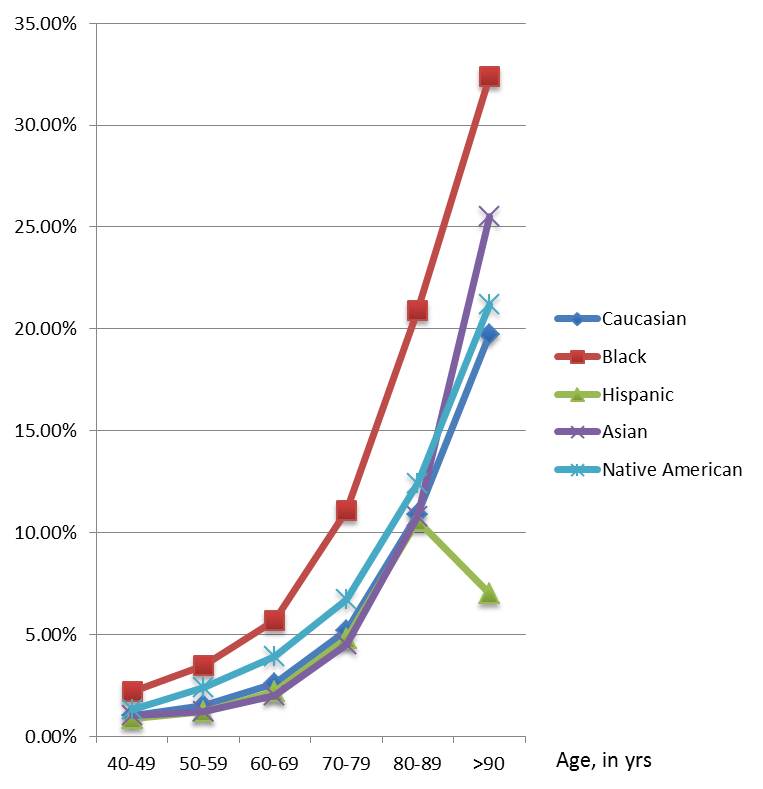|
|
 |
Back to Annual Symposium Program
The prevalence of lower extremity peripheral arterial disease varies significantly by race
Karan Garg, MD, Jeffrey S. Berger, MD, Yu Guo, MD, Thomas S. Maldonado, MD, Glenn R. Jacobowitz, MD, Mark A. Adelman, MD, Thomas S. Riles, MD, Caron B. Rockman, MD.
NYU Langone Medical Center, New York, NY, USA.
Objectives: African Americans are reported to have an increased prevalence of diabetes, and lower extremity amputations when compared to other races. The possible effect of concomitant peripheral arterial disease (PAD) on the rate of amputation in African Americans is unknown. This study evaluated the prevalence of PAD in a large racially diverse population
Methods: 3,696,778 patients underwent voluntary vascular screening. Ankle-brachial index (ABI) data and information on race was available for 3,474,645 subjects over age 40 years. PAD was defined as an ABI ≤ 0.9. Race was self-reported, as was medical history. Univariate and multivariate statistical analysis were performed.
Results: PAD was identified in 123,523 subjects (3.6%): 106,887 Caucasian (3.4%), 6,995 African American (6.5%), 1,924 Hispanic (2.3%), 1,521 Asian (2.2%), and 6,196 Native American (6.2%) individuals. African Americans had the highest prevalence of PAD, while Asians had the lowest. Patients with PAD were significantly more likely than those without to be older, and have diabetes, hypertension, hypercholesterolemia, and a smoking history. The prevalence of PAD dramatically increased with age in all races, except Hispanic individuals, reaching a peak at 90 years (Figure 1). Multivariate analysis controlling for age, sex and atherosclerotic risk factors identified age, smoking history, hypertension, dyslipidemia and diabetes mellitus to be independently associated with PAD. Additionally, multivariate analysis confirmed African American and Native American races to be independently associated with a significantly higher risk of PAD in both males and females when compared to their Caucasian counterpart: African American males (Odds ratio [OR], 2.13) and Native American males (OR, 1.45), and African American females (OR, 2.00) and Native Americas females (OR, 1.37).
Conclusions: In a large racially diverse population, PAD was associated with traditionally known risk factors. However, even after adjusting for these factors, African American men and women were twice as likely to have PAD as compared to Caucasians. This increased prevalence of PAD in African Americans is likely partially responsible for the increased risk of major lower extremity amputation in this group, and underscores the need to appropriately evaluate and treat African American patients for underlying PAD when they present with relevant lower extremity symptoms.

Back to Annual Symposium Program

|


